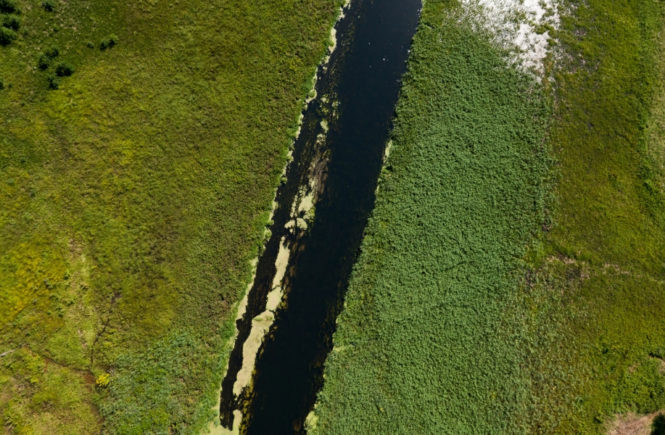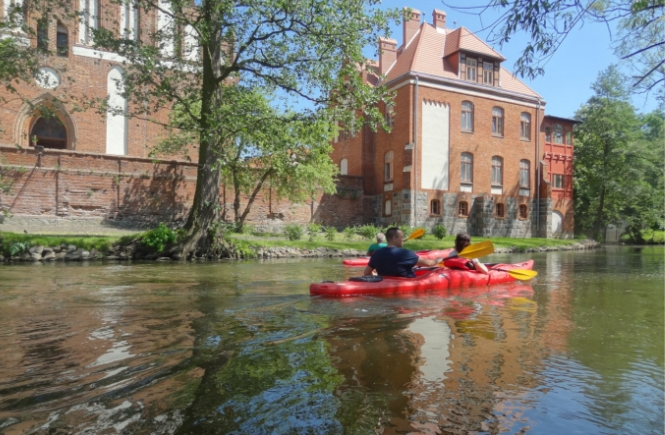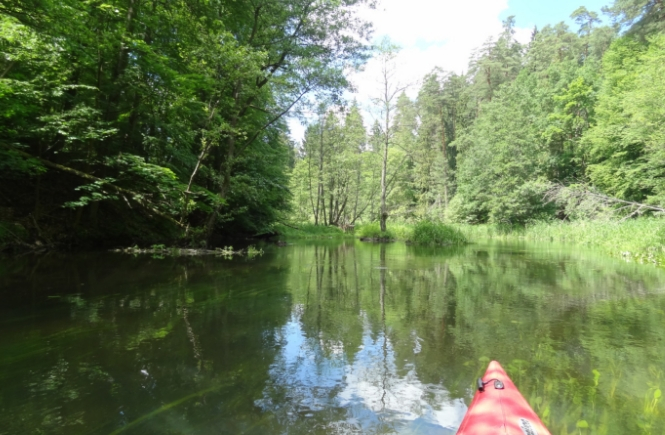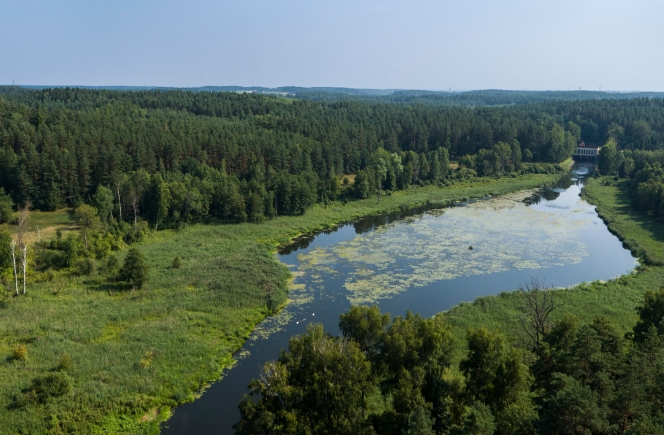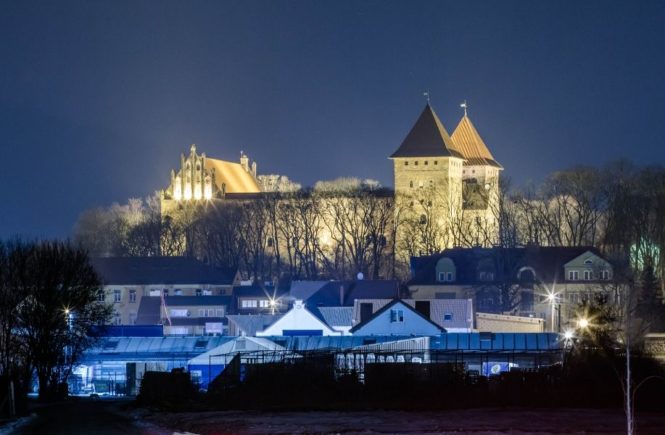The longest river in Varmia and Masuria- the Łyna is also one of the most interesting tourist trails. The river has its source nearby Nidzica and then it flows 200 km through Poland, crosses the border and continues as the River Lava to join the River Pregoła on the last leg of its journey. Since olden Prussian times it has played an important role for every generation.
The settlements on the banks of the Łyna river date back to the times before the XIII century which was the period for establishing the State of the Teutonic Order and Varmia Dominium. In a short time red- bricked buildings replaced wooden palisades and now only the untypical hills and walls from these ancient, forest settlements have remained to be seen.
In the close vicinity of the river there is an old settlement known as Sądyty. Sądyty is located in Olsztyn’s Town Forest where picturesque gorges on the River Łyna remind you of the magical old Prussian times. In the past the Łyna played various important roles such as: a natural border facilitating defense, a driving force for mills, a source of drinkable water and a transport route. Therefore it is no surprise that important towns and the regional, capital city- Lidzbark Warmiński grew along the banks of the Łyna which runs through the heart of Varmia Dominium. As a result, there is an impressive amount of medieval buildings on the Łyna route which you can admire and visit. Despite its relatively small size, Varmia Dominium was important on the international arena thanks to its prominent rulers. Bishops as well as religious chapters supported and promoted the development of art which can be seen today in precious collections in Varmian museums and temples. In 1503 the bishop of Varmia ‘s nephew – Nicolaus Copernicus came to Lidzbark Warminski. He did not want to be a bishop but focus on scientific research and thanks to that he became one of the greatest scientists in the world. In Olsztyn castle you can see an astronomical table that is the only remaining device made by Copernicus. In the history of towns located on the River Łyna you can find plenty of stories and prominent personalities which are worth examining in more detail.
Nowadays, the Łyna thanks to a tourist and recreational infrastructure plays a different important role. There are various parks and cycle paths along the river. The towns are open to the river – there are developed river banks in Dolne Miasto, Lidzbark Warmiński, Olsztyn’s Central Park and a planned waterway called Łynostrada. Cyclist can ride bikes along the Łyna river along the signposted Copernicus Trail. A Canoe is a good way to conquer the trail too. There are mini marinas where you can safely pitch your tent and make a campfire. The marinas are located so that you can reach the next one in a day , the same way as the Teutonic Knights built their castles!
Łyna Trail-is it for me?
Doubtlessly, it is a trail for people who like peace and quiet because even in high season there are no crowds of tourists. It is a unique canoe trail since it combines the possibility to learn fascinating history as well as natural features. Canoeing enthusiasts can stop in the towns on the Łyna directly beside the monuments thanks to special platforms prepared for catering for canoes. The Łyna also has a rather varied landscape. On the trail the river forms a few midforest gorges with faster currents and then it meanders through flowery meadows where you can see different and sometimes rare species of fauna and flora. Rafting on the Łyna river is generally easy and therefore good for family relaxation.
More information on www.rzekalyna.pl
Kamil Kopyść

